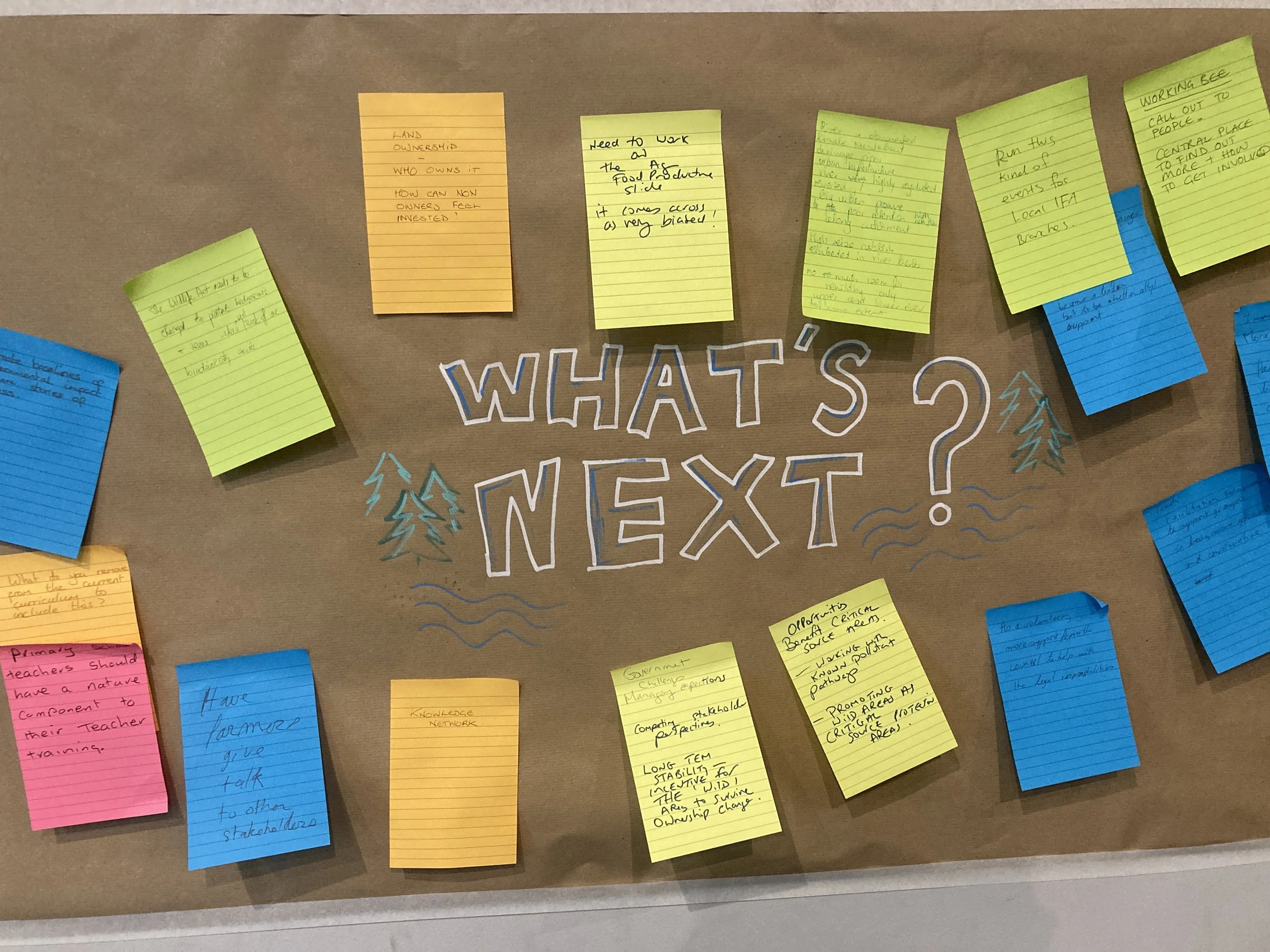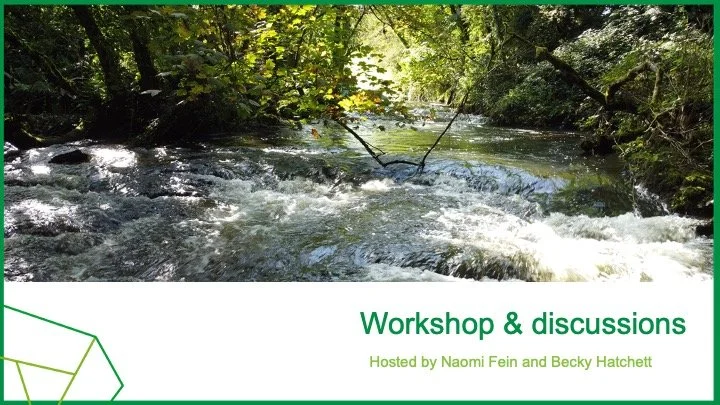Public Engagement in a river re-wilding research study
In collaboration with Naomi Fein from Think Visual, I recently had the privilege of designing and delivering the public consultation phase of an important and exciting river re-wilding project: a research study into the potential of River Ecosystem Services Corridors in Ireland.
A LEADER funded SECAD project being delivered by Ron de Bruin, the study aims to explore river re-wilding, ecological health, and economic possibilities for landowners and other stakeholders. The project has engaged farmers, landowners, community groups, the public, and government officials in conversations around sustainability and environmental stewardship.
On an exploratory community research project themed on river re-wilding in Cork, I worked with Becky and Naomi developing content and delivering community consultation and facilitation sessions. They were fantastic to work with and really good at understanding their client’s needs, along with being super at finding the best way to communicate a story - William O’Halloran, Wild Work Project Coordinator, SECAD Partnership, Cork.
Our involvement included supporting the research partners in preparing an impactful presentation and facilitating creative engagement sessions with key stakeholders. The stakeholder inputs from these sessions will contribute is contributing to exploring perspectives, identifying challenges, and charting a course for the possible implementation of re-wilding river corridors.
The lessons learnt will be made public this year but for now feel free to find out a bit more about the study below.
A few slides from the presentation:
More about the research:
Conducted by Ron de Bruin, Landscape architect and ecologist on behalf of SECAD Partnership CLG, the 1 year research focused on an innovative approach to re-wilding river corridors. The idea is to establish continuous buffer zones between watersheds and river channels, employing a diverse array of habitats including wetlands and woodlands.
In the scoping study, Ron meticulously reviewed scientific literature, examined case studies, and engaged in comprehensive stakeholder consultations, unearthing numerous policy and funding opportunities, alongside significant challenges. Foremost among these challenges was the necessity to ensure that any rewilding scheme would provide landowners with an income equivalent to traditional farming activities. The recent launch of the Native Tree Area Scheme (NTAS) by the forestry division of DAFM represents a pivotal development, offering landowners premiums comparable to top dairy earnings per hectare, thus rendering re-wilding efforts financially viable.
The availability of the NTAS scheme coincides with a crucial juncture in Irish agricultural life, where new generations of farmers seek improved work-life balance alongside a commitment to ecosystem protection and carbon emission reduction. River Ecosystem Services Corridor measures are poised to address these imperatives by creating interconnected land areas along watershed edges, fostering biodiversity, mitigating pollution, and sequestering carbon.
Challenges and Obstacles:
Despite promises, several challenges must be overcome. Identifying suitable rivers, securing participation from landowners, establishing a management entity, and fostering community engagement pose significant hurdles. Criteria for evaluating rivers include pollution risk, flood relief schemes, and proximity to non-agricultural land uses. Landowner reluctance stems from financial concerns, reluctance to reverse multi-generational works, and fears of flooding.
Management:
To address these challenges, a centralised management structure is essential. Coordination, professional services procurement, and on-the-ground management necessitate the involvement of a locally-based organisation. A management structure akin to those employed by European Innovation Partnerships (EIPs), comprising a steering committee and part-time executive section, is an example of how this could work.
Next Steps:
The objective of the project is to identify a blueprint for implementation. Public agencies, NGOs and community groups, are identified as potential partners to help identify next steps.





















